Hoka TenNine Shoe Review | Best for Downhill Running
by Chase Parnell — June 17, 2020
First off, let’s just get this out of the way: This. Shoe. Is. Weird. There’s no way around it so no sense in beating around the bush. I’ve read a lot of the other reviews on this shoe and I disagree with a lot of them. This is not a shoe you’re going to want to run regularly in. It just isn’t.
This is a shoe that was designed for a specific purpose: to help you run fast downhill. And in that regard, IT WORKS. So if you’re looking for a daily trainer, a versatile shoe that’s comfortable, stop right here, go check out my review of the Hoka Torrent 2. That’s my favorite shoe on the market right now. But if you’re a shoe nerd, a sneaker head, a Hoka enthusiast, or someone who’s aiming to take down some Strava downhill segment records, then the TenNine could be for you.
If that’s all you needed–a snappy but honest recommendation–stop reading here. But if you want to go deeper and understand the intricacies of what led me to these assertions, hang with me. Here’s my take from the bottom up.
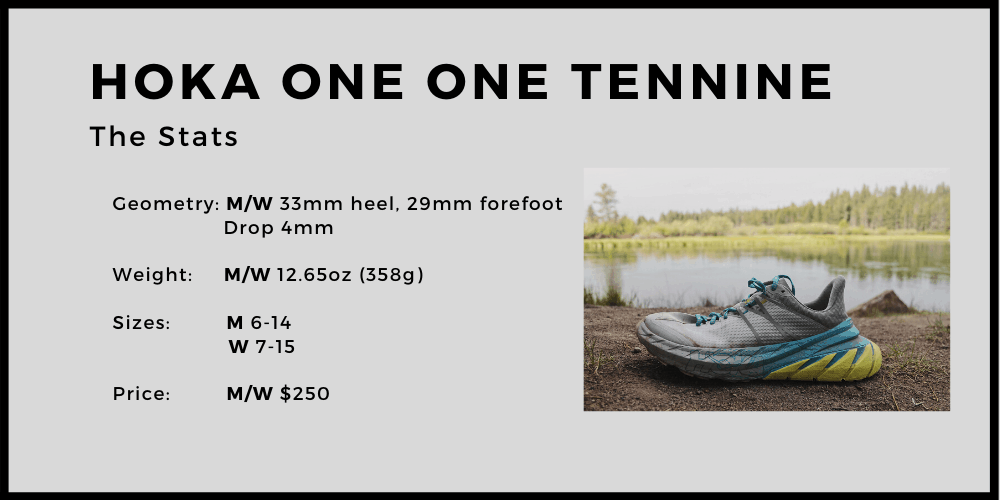
Outsole
This is a smartly lugged shoe. The density and depth of the lugs are most prominent in the heel to withstand a heavy heelstrike while flying downhill. The mid-foot and forefoot traction is lighter and more compressible, which makes sense.
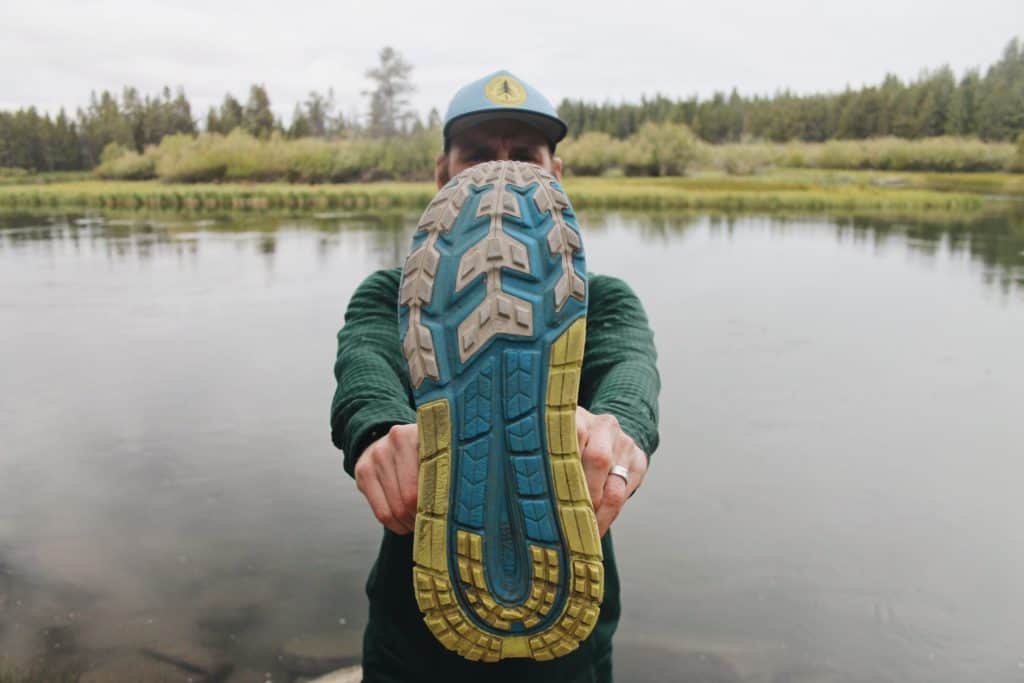
If you take a look at the most aggressive lugs on the heel of the shoe, you’ll notice little mini traction rivets on the surface of those lugs. So, lugs on lugs. I’d call that going the extra mile in the traction department. And rightfully so, we’re talking about probably the riskiest activity in this sport of ours, barreling down hills with lots of inanimate objects at a high velocity.
The platform on the TenNine is truly massive, and interestingly enough, the heel is actually wider than the forefoot. The idea here, if I understand it correctly, is to maximize the surface area that comes in contact with the ground to provide enhanced stability and economy when running downhill. Makes sense. Would you rather have a wide or narrow car tire when driving in the snow?
Midsole
Epic stack height: 33mm in the heel and 29mm in the forefoot; 4mm drop. The TenNine utilizes Hoka’s proprietary Hubble Technology. I know this because they imprint that name in the foam of the midsole. However, when you type in “Hoka Hubble Technology” into Google, there is absolutely no information about it whatsoever so it’s difficult to know what it means or does. Perhaps worse, on Hoka’s website, even when you type in Hubble Technology, no results are shown. I declare this strange.
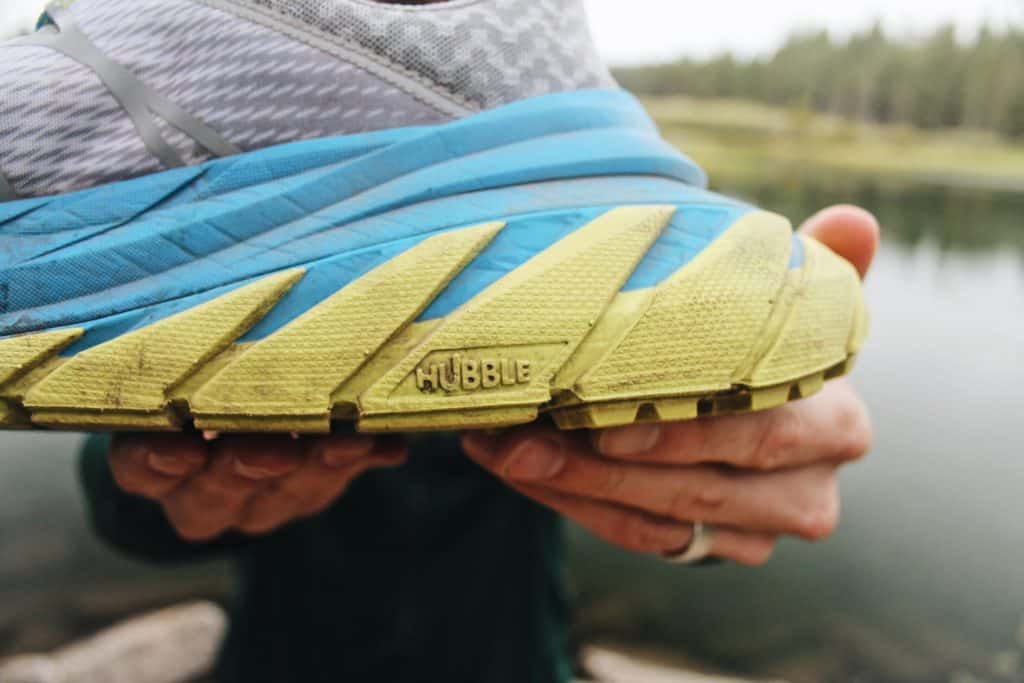
What makes this shoe really unique is how far the midsole hangs off the back of the shoe, maybe 2 full inches behind your heel. I’ve read a lot about how this shoe is super “plush” and “cush” but I didn’t find that to be the case. It’s not one of those shoes where you just sink into the cushioning. There’s a ton of foam but I wouldn’t say it’s super soft if that makes sense. And really, that’s how it should be. When running downhill, a real soft midsole will only make you feel unstable.
Upper
Not in love with this upper. I have a pretty narrow foot so I typically have to synch the laces almost all the way together. In the TenNine, this created some bunching of material at the base of the shoe’s tongue, which I can feel on the top of my foot as I run. Not a huge deal, but worthy of note.
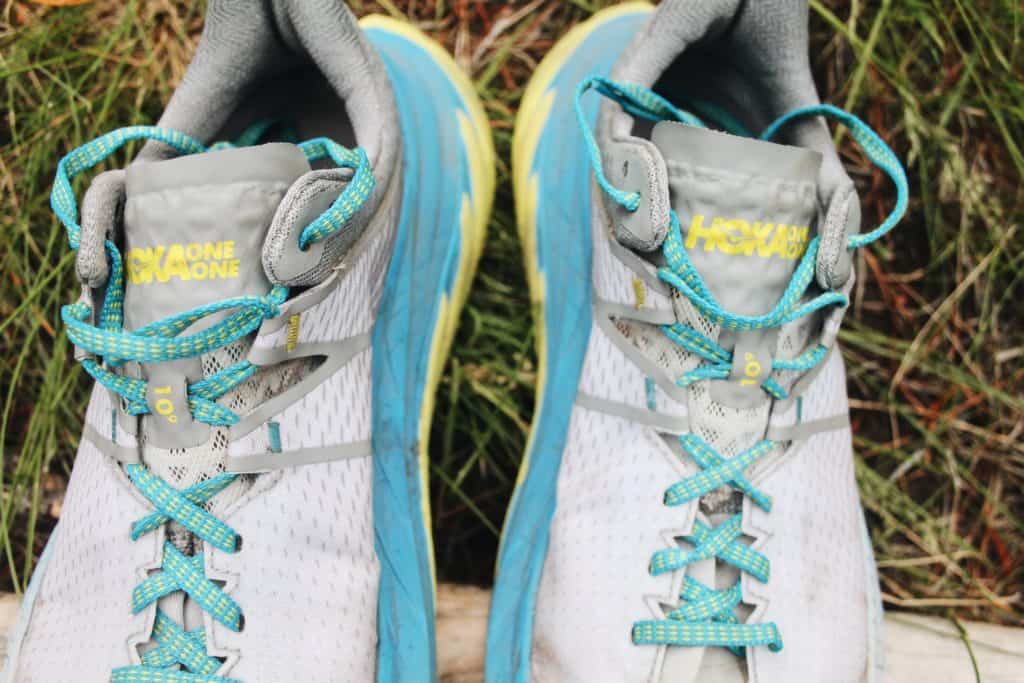
Also, the upper materials don’t have much give at all so you don’t get that nice snug form-fitted feel when you pull on the laces. But maybe that’s exactly what Hoka intended; a stiffer upper likely prohibits the foot from sliding forward on steep descents, thereby potentially saving a toenail or two from certain death.
The upper utilizes a very strange elf-like Christmas slipper heel cup, which extends up your achilles. I suppose it’s there to provide extra support but the material is so soft that I can’t imagine it’s keeping your tendon aligned or anything. Just another bit of marketing hocus-pocus?
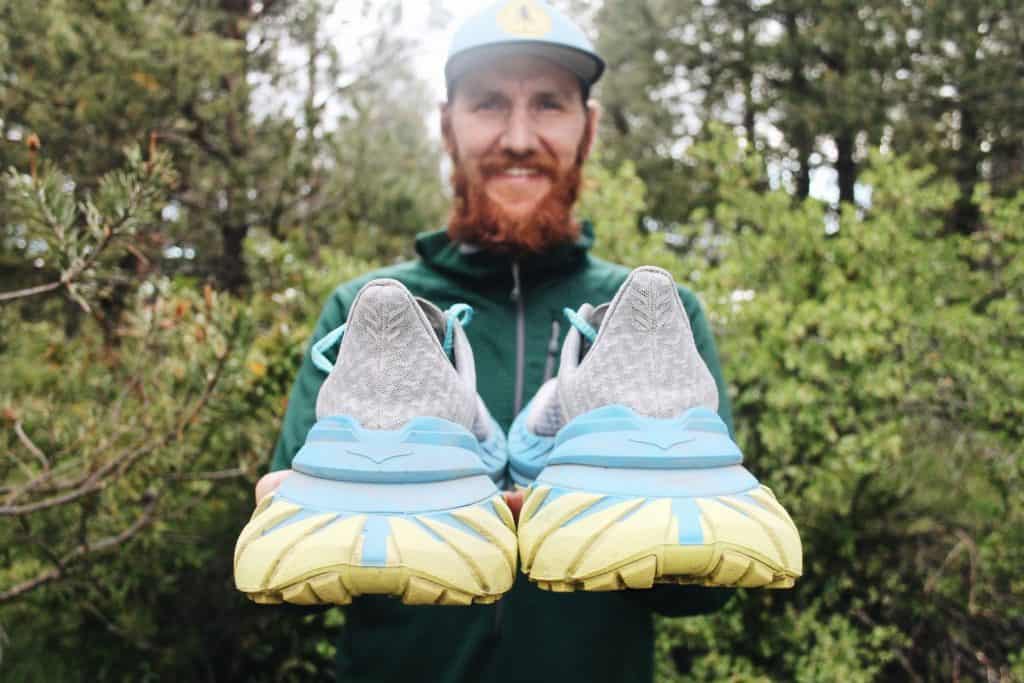
Lastly, there’s very little to the tongue of the shoe to you’re going to feel those laces when running at maximum impact/velocity downhill. I didn’t walk away with any lasting discomfort, but in my opinion, the tongue should be a bit thicker to cushion your foot as it slams forward into the shoe.
Flat and Uphill Running
These shoes are HEAVY. You feel it. At 12.65oz for a size 9, my pair of size 12s are well over 14oz. So when gravity isn’t on your side while running downhill, on flat and uphill grades you’re going to be a little annoyed by these tanks on your feet. I’m someone who typically gravitates towards light to mid weight shoes and almost never run in anything that’s on the heavier side, so part of this is most certainly just my preference, but hey, if you’re accustomed to the Brooks Beast, maybe this shoe will feel light and nimble!
Next, I can’t say that the extended heel and increased surface area provides any sort of smoother transition or notable benefits of any kind on flat or uphill terrain. A “normal” shoe is malleable enough for your body weight to contort the shoe to roll with your footstrike. There’s not a lot of budging with this shoe so the shoe roll feels a bit slappy. And forget about walking in the shoe.
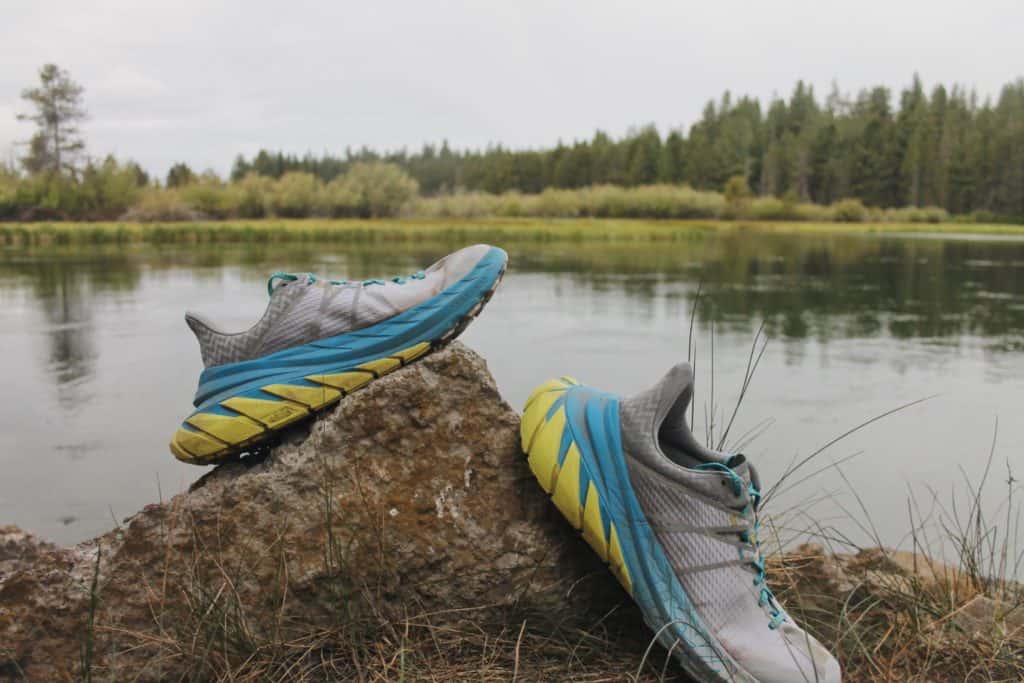
One issue I have with some of the other reviews is their claims that the TenNines are reminiscent of the old Mafate from Hoka’s early years. I ran in that shoe. THAT was a soft shoe that you really sunk into. The only similarities are the stack heights and the fact that you can’t really feel your foot contact and roll over the ground; no proprioception.
Lastly, beware of running on terrain with large rocks and roots. These shoes can easily handle small rocks, and they do so very well because of their size, but they can quickly turn into ankle breakers if trying to rock hop or navigate really technical terrain.
Downhill Running
Sorry, I know I’ve been a little rough on the TenNines thus far. And this is coming from a huge Hoka fan! I’ve run almost exclusively in the Torrents and Rincons for the last couple of years. But I have to be honest with you guys, otherwise, what value would I be providing our readership?
So yeah, finally I get to gush a little bit. A few months back, when all my races were cancelled, I decided to start a little project of my own: “The Descents Project.” My idea was to find some pretty steep gnarly Strava descent segments and shoot for the records while holding a GoPro to capture the fun (and hopefully not biff it for all to see).
For my third descent, the north side of Gray Butte in central Oregon, I donned the TenNines, and attempted my steepest route yet. The TenNines proved to be an excellent tool. You just have to watch the video; I had a blast:
Conclusion
The Hoka One One TenNine is a specialty shoe, much like a track spike. You aren’t going to go run down a mountain in your spikes just like you’re not going to take the TenNine to the track for some 400s. They were designed for a purpose: to run hard downhill. And for that, they work. The shoe is functional on the approach or climb up to the start of your descent, but you’re not going to love it. They are heavy and odd feeling and just a little uncomfortable.
But! As I mentioned from the get-go, maybe you’re that guy or gal that likes having a lot of arrows in the quiver. Maybe the ability to run fast downhill is plenty reason enough for the $250 price tag. They make a nice conversation piece at the very least. You are sure to get some wild eyed comments if you wear them to you local watering hole after your weekend long run.
At the very least, I like that Hoka continues to try to innovate. They are bringing shoes to the market that stretch the status quo, open unique doors and possibilities, and give consumers new tools to enjoy the sport we love. This particular shoe wasn’t for me personally, but I can’t wait to see what Hoka does next!
Hoka TenNine Video Review
If you enjoyed this review, consider signing up for our weekly Rise & Grind Newsletter or chipping in a few dollars a month via Patreon. Every little bit goes a long way to keeping Treeline Journal afloat. Thank you for your support!


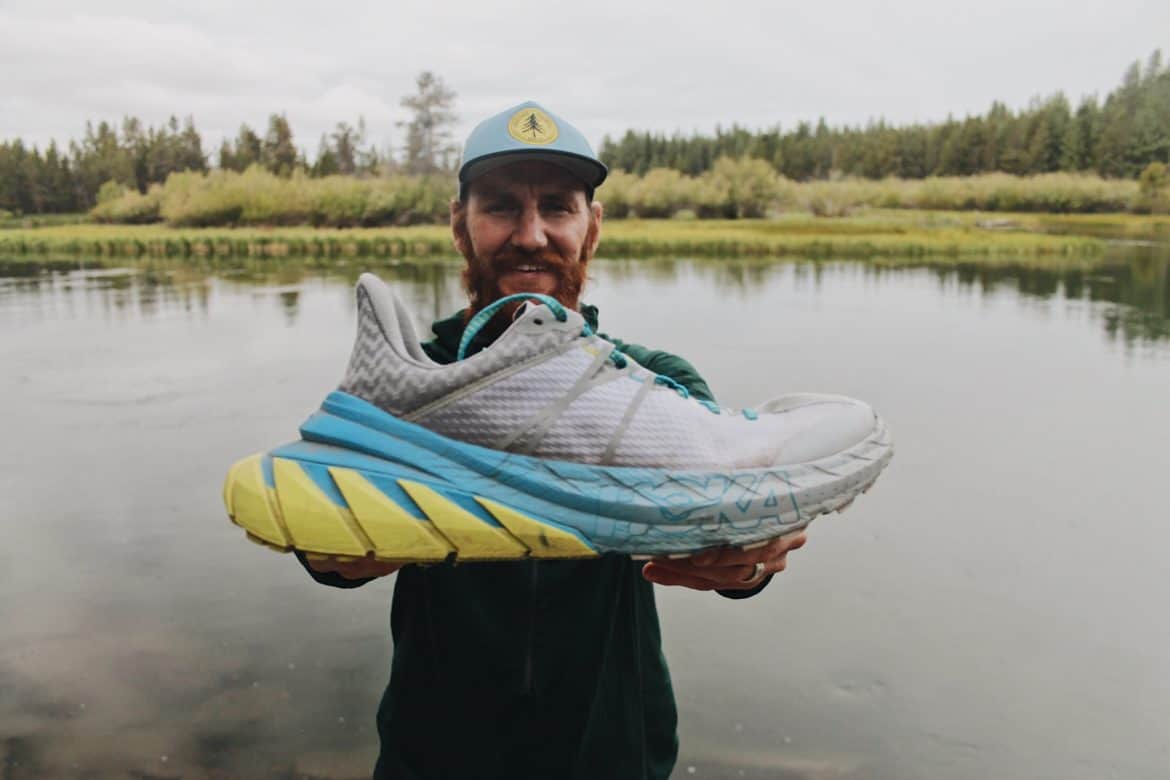
Weird shoe, but a great review, thanks! Have to correct the assumption in the beginning about maximizing the surface area (”Makes sense. Would you rather have a wide or narrow car tire when driving in the snow?”) Actually you want your winter tires to be on the narrow side because the smaller the contact area the greater the pressure per cm2 (or in2). Wider tires tend to float on the snow whereas narrow tires cut through the snow and give more traction.
Yeah, probably not the best analogy. I have no business talking about tires anyway! Ha. Looking at Hoka’s statement, the maximal surface area of the outsole apparently improves stability so you can run downhill with more confidence/safety, not necessarily traction. But now you have me wondering if the wider shoe creates any sort of float similar to a wide tire in snow. Hmmm. Probably depends largely on the type of surface/snow. I imagine there are differences between powder/ice/hard pack for tires just as there are for shoes on the trails. Good stuff. Thanks!